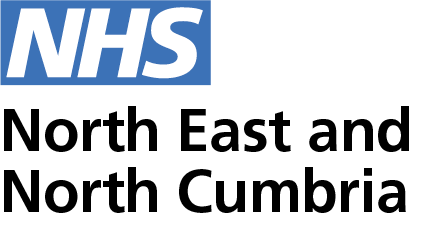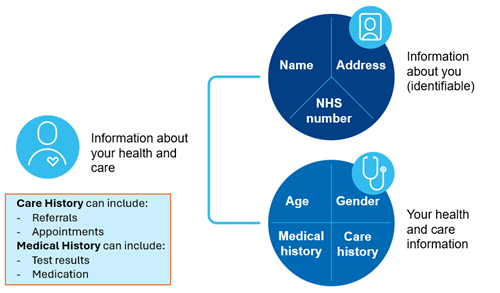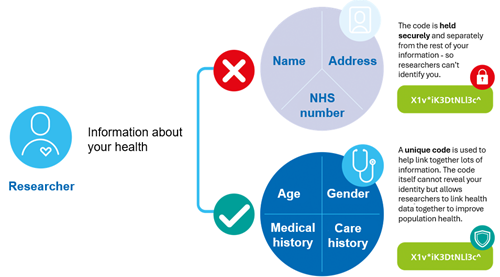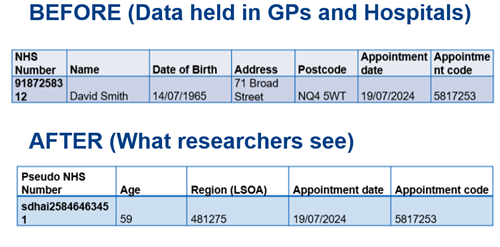We keep a register of all projects who access health information on the Secure Data Environment.
Currently there are two projects who are accessing the Secure Data Environment.
Project name: Patient Safety Research Collaboration (PSRC) - Polypharmacy
Project code: SDE_NENC_PROJ_5
Applicant: Newcastle University
Data type: Grouped (small numbers hidden)
Project description: The goal of this project is to understand how taking lots of medicines (polypharmacy) and having several long-term health conditions affect people in the North East and North Cumbria.
People are living longer, but this means they often have long-term health problems. Because of this, many need to take more medicines. Taking five or more medicines is called polypharmacy. This can cause problems, especially for older people, such as becoming frail, needing to go to hospital more, or medicines reacting badly with each other. These problems are sometimes called inappropriate polypharmacy.
Some studies have looked at polypharmacy in poorer communities or among people from ethnic minorities. These groups may be at higher risk of taking too many medicines that could cause harm, but we still don’t know exactly how bad the problem is.
This project will focus on understanding how common polypharmacy is in the North East and North Cumbria. It will also look at the link between taking lots of medicines and having more than one long-term health condition. By using data about people’s backgrounds in different areas, the project will study how polypharmacy affects people in disadvantaged communities. The aim is to help those most at risk and suggest ways to make things safer for patients.
Date of agreement: Not applicable, no personal data being processed
Period of data access agreement: Not applicable
Project name: AI Multiply Using artificial intelligence (AI) to characterize the dynamic inter-relationships between MUltiple Long-term condiTIons and PoLYpharmacy and across diverse UK populations and inform health care pathways
Project code: SDE_NENC_PROJ_1
Applicant: Newcastle University
Data type: Pseudonymised Record Level - people's names and contact information is replaced with a code which allows their health information to be linked, but they can't be identified.
Project description: Many people live with two or more long-term health problems, such as cancer, heart disease, or mental health conditions. These health problems, called Multiple Long-Term Conditions (MLTCs), can lead to worse health and shorter lives.
Treating MLTCs can be tricky. Often, people need to take lots of medicines—this is called polypharmacy when it’s five or more. But taking lots of medicines can sometimes cause new problems if the drugs don’t work well together.
The AI MULTIPLY project wants to make treatment better for people with MLTCs. It will look at how these conditions and taking many medicines are connected. The project will also study how personal and social factors affect polypharmacy. By learning more about these links, the project hopes to create fairer healthcare for everyone.
Date of agreement: 07 May 2024
Period of data access agreement: One year




